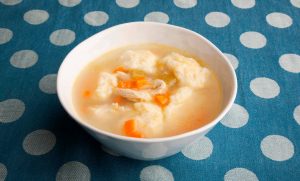
Every year millions of people fall ill due to contaminated food. For those of us going through cancer treatment, food safety can be especially important. If you are immune-compromised these guidelines are for you. If you’re not, our tips can help you avoid unwanted food contamination and potential food poisoning. From shopping to storing, the more you know the safer you can be.
Here are some of our best food safety tips & guidelines. And always follow advice from your registered dietitian and oncologist regarding foods you can and cannot eat.
Shopping:
- Always check “expiration” and “best if used by” dates.
- Packaging should not be damaged or compromised in any way.
- If your immune system is compromised, avoid the bulk section, buffets, salad bars, and the deli counter.
- Pick up frozen and cold food last while you’re at the store and consider buying a soft cooler to keep them cold during transportation.
- Make sure all fruits and vegetables you buy are free of mold and damage.
- Keep raw foods separate from other foods in your cart.
- Make sure to wrap uncooked meats in their own separate plastic bag to keep them from contaminating fresh ingredients.
Preparing:
- Always wash your hands with soap and warm running water with friction for 20 seconds before and after every step of food preparation. This is especially important after working with raw meat, seafood, and poultry.
- If you have scrapes or cuts on your hands, cover them before handling food.
- Use clean paper towels to dry hands and any food; kitchen towels can transfer bacteria. Be sure to replace dishcloths and dishtowels daily. Launder them using the hot cycle in your washing machine.
- Regularly disinfect your working area.
- Replace or boil sponges.
- Always use separate cutting boards and utensils for raw meats and fish to prevent cross-contamination with other foods like fresh fruits, vegetables, and bread. If you are able, it is great to designate separate cutting boards for meat only and vegetables only. We like to use colored plastic cutting boards for meat.
- Sanitize both wooden and plastic cutting boards with the dilute bleach solution. Make sure to do this after each time the cutting board comes in contact with raw meat, fish, or poultry.
- Make sure to sanitize other cutting boards at least once per week. Submerge the cutting boards in the bleach solution and allow to air dry for a minimum of 2 minutes.
- Wash all fruits and vegetables before cooking or eating with cool running water, even those that have an outer peel or rind.
- Make sure to wash all pre-packaged, pre-washed salads under running water.
- Wash all cans or bottles before you open them to prevent bacteria from entering the safe food.
Storage:
- Make sure to put all cold items in the fridge or freezer as soon as you get home.
- Keep your refrigerator at 40° F and your freezer at 0° F
- Never over-crowd your fridge or freezer. Air needs to circulate to ensure cold temperatures throughout your fridge.
- Keep food in the fridge covered and labeled.
- To avoid cross-contamination, never store raw meat or fish above pre-cooked or prepared foods.
- Throw away all prepared foods after 72 hours (3 days). It can be helpful to write dates on your food using labels or on masking tape to make sure you stay within the 72-hour limit.
- If it’s smelly or you don’t remember when you got it, toss it out!
- Store eggs in the carton in the body of the fridge, not in the door which is warmer. Milk also keeps better inside the fridge.
- Store nuts, nut butters, and whole-grain flours in the fridge to prevent their oils from turning rancid.
- Clean your refrigerator weekly to reduce the risk of transmitting bacteria.
- It is best to cool hot foods in shallow containers uncovered in the refrigerator. Once cooled, cover and label with today’s date and make sure to use it within 72 hours.
- Be sure to store any foods you know you will not eat within 72 hours in the freezer.
Cooking:
- Thaw and marinate food in the refrigerator, not on the counter.
- Cook meat to its appropriate internal temperature.
- Do not consume raw cookie dough, cake batter, or salad dressings containing raw or coddled eggs.
- Keep food at safe temperatures: hot food above 140F and cold food below 40F
- When microwaving foods, be sure to rotate your food a quarter turn once or twice during the cooking process if there is no turntable in your microwave.
- If you are reheating foods in the microwave, be sure to cover them and stir your food 2-3 times during reheating. Be sure to heat to a minimum of 165oF, and once cooked, cover and let stand for 2 minutes before consuming.












Reviews & Comments
No reviews yet.
Leave a Review or Comment